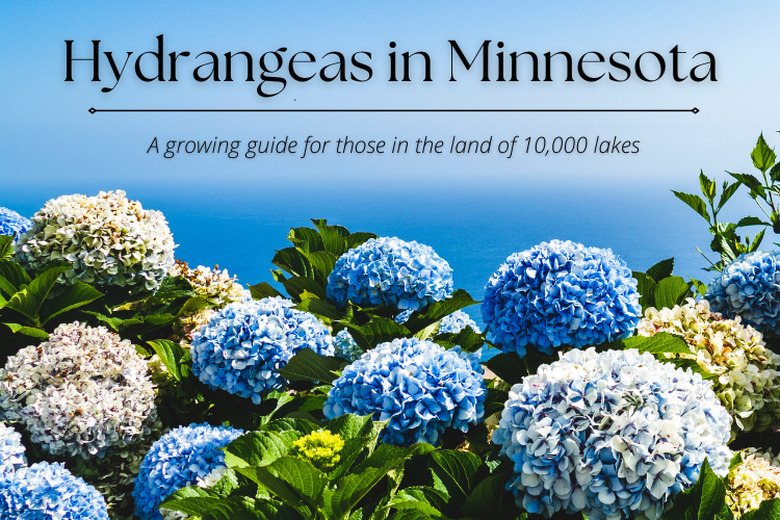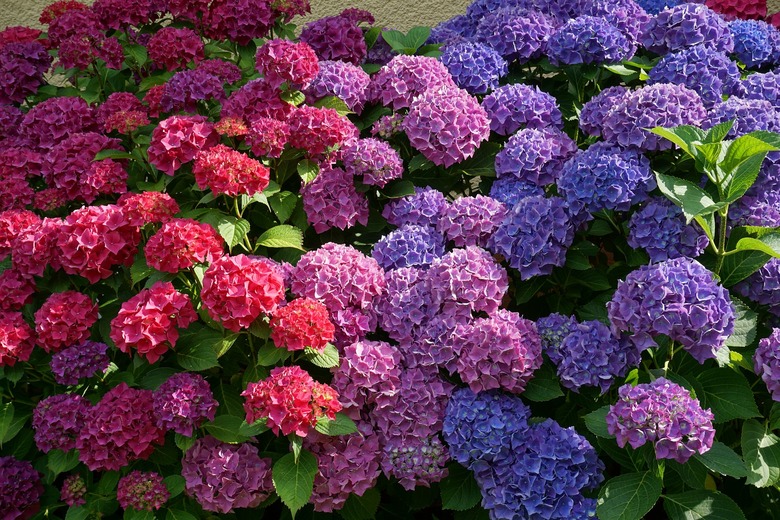Hydrangeas In Minnesota: Types, Pruning Tips & Winter Care
Hydrangeas are popular deciduous flowering shrubs grown in many parts of the United States, including Minnesota, and there is a wide range of species and cultivars from which to choose.
When growing hydrangeas in Minnesota, it is important to select varieties that are winter hardy in your part of the state. According to the Arbor Day Foundation, Minnesota falls within U.S. Department of Agriculture plant hardiness zones 3 to 5, with the northern part of the state having a colder climate than the southern regions.
This guide will take a look at some of the different varieties of cold-hardy hydrangeas, as well as provide helpful information on how to best care for them to ensure their survival through the harsh winter season.
Types of Hydrangeas for Minnesota
If you live in southern Minnesota, which falls in USDA zone 5, you can consider growing the popular bigleaf hydrangea (Hydrangea macrophylla). The color of the bigleaf hydrangea's flowers is determined by the pH of the soil. The blooms will be blue in soil that is acidic and pink in soil that is alkaline.
The oakleaf hydrangea (Hydrangea quercifolia) is also an option in the southern parts of the state, though the Missouri Botanical Garden notes that both of these species need winter protection in zone 5.
If you are located in the northern parts of the state, consider growing the panicle hydrangea (Hydrangea paniculata) or the smooth hydrangea (Hydrangea arborescens). Panicle and smooth hydrangeas produce white flowers, but you'll find cultivars in other colors. Both of these species are hardy to zone 3, according to the Missouri Botanical Garden, which makes them some of the hardiest hydrangeas you'll find. If you are looking to plant a vine, plant climbing hydrangeas (Hydrangea anomala subsp. petriolaris), which are hardy to zone 4.
When Do Hydrangeas Bloom in Minnesota?
Hydrangeas are summer-blooming plants, with most species blooming between July and September. However, in some cases, bigleaf and oakleaf hydrangeas in cold climates like that of Minnesota may not bloom at all in some years as a result of winter temperatures.
Hydrangeas also prefer to grow in part shade, and flowering may be reduced and the bloom period cut short if the plants are exposed to too much sun. With adequate moisture, however, hydrangeas can do well in full sun.
Pruning Hydrangeas in Minnesota
Hydrangeas often need to be pruned to look their best. Some hydrangeas, including the bigleaf and oakleaf hydrangeas, bloom on the previous year's wood, called old wood. These species should be pruned right after they are finished flowering. If you prune after new buds are set, you won't have flowers the following spring. You should, however, prune out any branches that suffer winter injury.
Pruning hydrangeas in fall is possible if you are growing species that bloom on the current year's wood, referred to as new wood. The smooth and panicle hydrangeas are examples of species that bloom on new wood. They can be cut all the way down to the ground during the winter to rejuvenate the plant. The climbing hydrangea rarely requires pruning.
Hydrangea Minnesota Winter Care
Because they produce flowers on old wood, if you are growing bigleaf or oakleaf hydrangeas in Minnesota, you will want to provide winter care to make sure that the shrub's flower buds survive until spring. The Missouri Botanical Garden recommends wrapping hydrangea shrubs in burlap or surrounding them with chicken wire and filling the space with a layer of leaves or straw 8 to 12 inches thick.
It is also a good idea to grow your hydrangeas where they will be protected from harsh winter winds. The University of Minnesota Extension also recommends surrounding your hydrangea shrubs with hardware cloth or wire fencing during the winter months to keep rabbits from munching on the branches.
References
- Arbor Day Foundation: Hardiness Zone Map
- Missouri Botanical Garden: Hydrangea quercifolia
- Missouri Botanical Garden: Hydrangea paniculata
- University of Minnesota Extension: Pruning Hydrangeas for Best Bloom
- Missouri Botanical Garden: Hydrangea anomala subsp. petiolaris
- Missouri Botanical Garden: Hydrangea macrophylla
- Missouri Botanical Garden: Hydrangea arborescens

